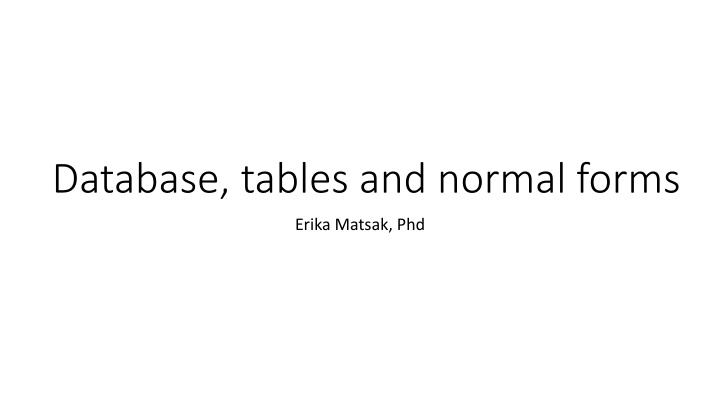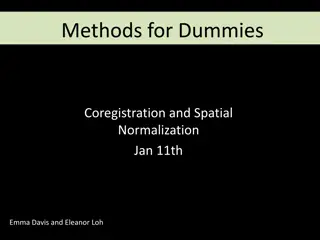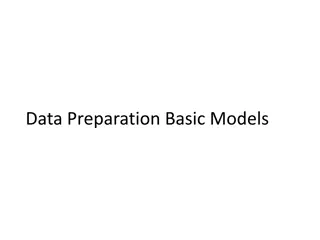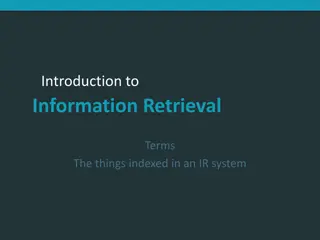
Database Tables and Normal Forms in Database Design
Explore the fundamentals of database tables and normalization forms in database design through informative content covering schemas, relationships, notation examples, dependencies, referential integrity, and key examples. Learn about primary keys, foreign keys, functional dependencies, and more essential concepts for effective database management.
Download Presentation

Please find below an Image/Link to download the presentation.
The content on the website is provided AS IS for your information and personal use only. It may not be sold, licensed, or shared on other websites without obtaining consent from the author. If you encounter any issues during the download, it is possible that the publisher has removed the file from their server.
You are allowed to download the files provided on this website for personal or commercial use, subject to the condition that they are used lawfully. All files are the property of their respective owners.
The content on the website is provided AS IS for your information and personal use only. It may not be sold, licensed, or shared on other websites without obtaining consent from the author.
E N D
Presentation Transcript
Database, tables and normal forms Erika Matsak, Phd
A Database Schema [1] Schema Owner Tables Indexes Procedures Views Constraints schema objects 1) Stephens, R.K. and Plew. R.R., 2001. Database Design. SAMS, Indianapolis , IN. (with slight changes by V.G.D.)
A Database with Multiple Tables [1] Publishers Books Customers Authors Inventory Orders 1) Stephens, R.K. and Plew. R.R., 2001. Database Design. SAMS, Indianapolis , IN. (with slight changes by V.G.D.)
Three Types of Relationship There are three types of table relationship: One to one or denoted as 1:1 One to many or denoted as 1:M Many to Many or denoted as M:N 4
Notation example Rep 1 Customer Repnum (PK) Lastname Firstname Street City State Zip Commission Rate Customernum (PK) Customername Street City State Zip Balance CreditLimit Repnum (FK) M One Rep could have one or more customer (one to many) using Primary and foreign key to create the relationship. 5
Dependencies Functional dependency: The value of one attribute depends entirely on the value of another. Partial dependency: An attribute depends on only part of the primary key. (The primary key must be a composite key.) Transitive dependency: An attribute depends on an attribute other than the primary key. Relational algebra from set theory
Referential Integrity Referential Integrity means that the Foreign key must match in terms of actual values and data types with the related Primary Key. 7
Examples from Premier Database Primary Key Repnum uniquely identifies the Rep table and is the primary key of this table. 8
Examples from Premier Database Primary Key Customernum uniquely identifies the Customer table and is the primary key of this table. 9
Examples from Premier Database Foreign Key Repnum is a Foreign key borrowed from Rep table 10
Primary Key Roles (Performances) primary key fields A primary key can consist of more than one field.
Foreign Key primary key field parent table Directors relationship child table Movies foreign key field
Figure 14.2 Figure 14.2 Example relations 14
First Normal Form (1NF) First Normal Form (1NF) Now first normal form is satisfied, as the columns on each table all hold just one value. This table is not in first normal form because the [Color] column can contain multiple value PRIMARY KEY?
Normalize into 1NF Normalize into 1NF Separate repeating groups into new tables. Start a new table for the repeating data. The primary key for the repeating group is usually a composite key. First normal form (1NF) is a property of a relation in a relational database. A relation is in first normal form if and only if the domain of each attribute contains only atomic (indivisible) values, and the value of each attribute contains only a single value from that domain.[1] The first definition of the term, in a 1971 conference paper by Edgar Codd, defined a relation to be in first normal form when none of its domains have any sets as elements.[2]
Once a table is in first normal form it is easier to search, filter, and sort the information. The rules to satisfy 1stnormal form are: The table stores information in rows and columns where one or more columns, called the primary key, uniquely identify each row. Each column contains atomic values, and there are not repeating groups of columns. When a value is atomic, the values cannot be further subdivided. For example, the value Chicago is atomic; whereas Chicago; Los Angeles; New York is not. Related to this requirement is the concept that a table should not contain repeating groups of columns such as Customer1Name, Customer2Name, and Customer3Name.
Second normal form Second normal form Second normal form (2NF) is a normal form used in database normalization. 2NF was originally defined by E.F. Codd in 1971.[1] A relation that is in first normal form (1NF) must meet additional criteria if it is to qualify for second normal form. Specifically: a relation is in 2NF if it is in 1NF and no non-prime attribute is dependent on any proper subset of any candidate key of the relation. A non-prime attribute of a relation is an attribute that is not a part of any candidate key of the relation. Put simply, a relation is in 2NF if it is in 1NF and every non-prime attribute of the relation is dependent on the whole of every candidate key.
Second normal form Second normal form Second normal form (2NF) further addresses the concept of removing duplicative data: Meet all the requirements of the first normal form. Remove subsets of data that apply to multiple rows of a table and place them in separate tables. Create relationships between these new tables and their predecessors through the use of foreign keys.
Simple example Simple example KEY Office_city Position Salary Computer Washington Cleaner 20000 No Tokyo Software developer 40000 Yes Washington Software developer 25000 Yes Office_city Position Salary Washington Cleaner 20000 Tokyo Software developer 40000 Washington Software developer 25000 Position Computer Cleaner No Software developer Yes Software developer Yes
Though they are used to describe which office the SalesPerson is based out of, the SalesOffice and OfficeNumber columns themselves don t serve to describe who the employee is. If all the SalesOffices close, it doesn t mean you have to delete the records containing sales people. NON-FUNCIONAL RELATION
An intersection table is useful when you need to model a many-to-many relationship. Each column is a foreign key.
The table in this example is in first normal form (1NF) since all attributes are single valued. But it is not yet in 2NF. If student 1 leaves university and the tuple is deleted, then we loose all information about professor Schmid, since this attribute is fully functional dependent on the primary key IDSt. To solve this problem, we must create a new table Professor with the attribute Professor (the name) and the key IDProf. The third table Grade is necessary for combining the two relations Student and Professor and to manage the grades. Besides the grade it contains only the two IDs of the student and the professor. If now a student is deleted, we do not loose the information about the professor. Second Normal Form (2NF)
Definition of third normal form Definition of third normal form The third normal form (3NF) is a normal form used in database normalization. 3NF was originally defined by E.F. Codd in 1971.[2]Codd's definition states that a table is in 3NF if and only if both of the following conditions hold: The relation R (table) is in second normal form (2NF) Every non-prime attribute of R is non-transitively dependent on every key of R. A non-prime attribute of R is an attribute that does not belong to any candidate key of R.[3] A transitive dependency is a functional dependency in which X Z (X determines Z) indirectly, by virtue of X Y and Y Z (where it is not the case that Y X).[4]
Third normal form (3NF) Third normal form (3NF) Third normal form (3NF) goes one large step further: Meet all the requirements of the second normal form. Remove columns that are not dependent upon the primary key.
Third normal form (3NF) Third normal form (3NF)
Exercise normalization Exercise normalization The following table is already in first normal form (1NF). There is only one entry per field. Please convert this table to the third normal form (3NF) UnitID StudentID Date TutorID Topic Room Grade Book TutEmail U1 St1 23.02.03 Tut1 GMT 629 4.7 Deumlich tut1@fhbb.ch U2 St1 18.11.02 Tut3 GIn 631 5.1 Zehnder tut3@fhbb.ch U1 St4 23.02.03 Tut1 GMT 629 4.3 Deumlich tut1@fhbb.ch U5 St2 05.05.03 Tut3 PhF 632 4.9 D mmlers tut3@fhbb.ch U4 St2 04.07.03 Tut5 AVQ 621 5.0 SwissTopo tut5@fhbb.ch






















